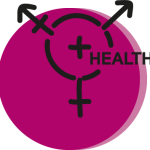CoP Introduction and Background
Despite the fact that preserving fertility and avoiding infertility is part of many people’s sexual and reproductive health life concerns, choices and behavior, these topics are largely ignored by sexual and reproductive health and rights (SRHR) policies and programmes.
Our Community of Practice (CoP) on Infertility believes the ability to choose to have children is a basic human right, just like other SRHR. We envision a world where infertility is an integral part of SRHR policy, plans and programmes. Accordingly, in line with the overall objectives of Share-Net International and Share-Net Netherlands, our mission is to generate, share and promote the use of knowledge for successful integration of infertility within SRHR policies, plans and programmes. We look at infertility holistically and promote the prevention of infertility, the importance of destigmatising female and male infertility and childlessness, of having access to a broad range of quality (in)fertility care and involving men.
CoP Objectives
Our activities include doing research and disseminating research results, organising roundtables and conferences, and supporting collaboration between groups of people affected by infertility and organisations focusing on SRHR.
2015
2015
In 2015, a Share-Net International Small Grant project was funded to investigate “Involuntary childlessness, ‘low cost’ IVF and fertility associations in Ghana and Kenya: Enhancing knowledge and awareness.” The objective of this research projects was to increase awareness amongst various stakeholders about infertility and childlessness in Kenya, Ghana and worldwide and to generate new insights about experiences and needs of people with fertility problems and (possible) interventions.
2015
2017
2017
The CoP on Infertility was created immediately after the ‘Amsterdam Infertility Roundtable’, that was organised in December 2017. This Infertility Roundtable was a the final dissemination activity of the Share-Net Small Grant project on Infertility in Ghana and Kenia.
At the same time, we started a new Small Grant project called “Jembatan. a pilot project to support the integration of (in)fertility issues into SRHR programming in Indonesia”. We designed the Jembatan project – ‘jembatan’ means ‘bridge’ in Indonesian – to facilitate NGOs working in SRHR and an infertility support group in Yogyakarta, Indonesia, to come together, engage in dialogue, share experiences and knowledge, and collaborate. The project intended to ‘bridge’ the distance between stakeholders with a shared interest in issues of (in)fertility, but who are not used to reach out to each other and engage.
2017
2018
2018
In 2018-2019 we kept working on the Jembatan project (see above) to support the integration of (in)fertility issues into SRHR programming in Indonesia. As part of our advocacy work we also supported the SheDecides Week with our call to action. Last but not least, in December 2018, we attended the WHO global summit on Infertility, where we engaged in discussions around defining and understanding infertility, diagnosis and treatment, increasing access to infertility services as well as ethics, rights and gender in regard to fertility care. These inputs will lead to a call for action to action.
2018
1/1/2019
2019
In 2019, the first session ever on infertility took place at the 2019 Women Deliver Conference in Vancouver. The session called ‘Women Deliver…Or Not: Breaking the Silence on (In)fertility’ was co-organised with the World Health Organization and the Center for Reproductive Rights.
In the same year, ‘Breaking the Silence on Infertility’ was one of the two main topics during the Share-Net International Co-Creation Conference. The objective was to 1) put infertility higher on the agenda and 2) integrate infertility in different SRHR programmes, processes, policies and practices, in dialogue and exchange with the participants representing CSOs, Share-Net hubs, and global institutions. In this context, an international CoP on the topic of Infertility was created and two small grants resulted into a Narrative Review “Breaking the silence on Infertility” and an Evidence Brief used during the conference. The Annexes of the Narrative Review can be found here.
Furthermore, the ‘Stepping Stones’ document with tips and tricks for integrating (in)fertility in SRHR programmes was published, based on the lessons learnt and results from the Jembatan project.
1/1/2019
2020
2021
2021
The CoP engaged in producing an academic article based on the knowledge products from the Co-Creation Conference 2019. Stay tuned for the publication!
Furthermore, the CoP aims to contribute to awareness raising and knowledge exchange about infertility in linkage with other Share-Net Netherlands’ CoPs, and also with other Share-Net country hubs.
2021
Key CoP Resources
Fertility Problems and Fertility Care in Sub-Saharan Africa: The Case of Kenya
Interested in Joining?
If you’re interested in getting in touch with this community, feel free to reach out to Bless-me Ajani.
CoP members can access their online working space on Mighty networks via this link (Share-Net Netherlands members only).



